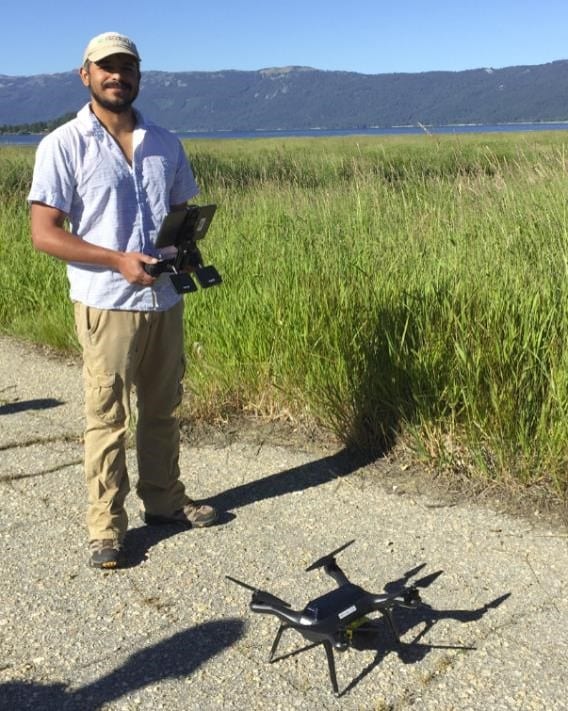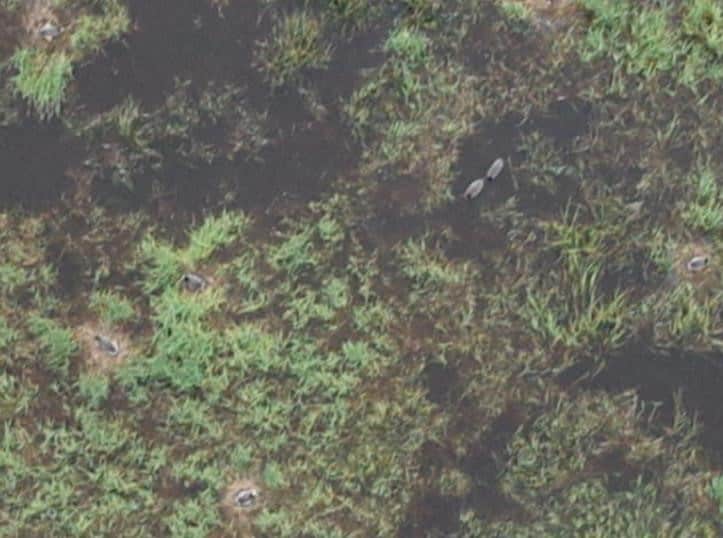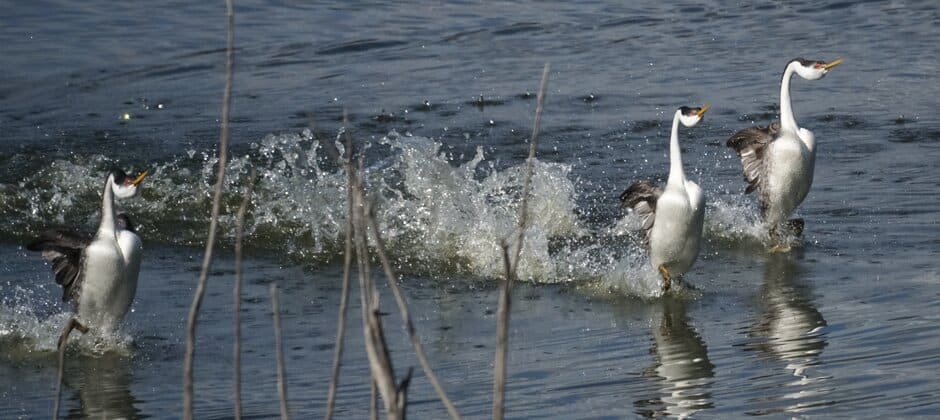Share this article
Drones reveal grebes’ nesting activity
Forget about sneaking up on a flock of western grebes. In the Cascade reservoir in western Idaho, the birds sometimes nest on floating patches of vegetation. If they don’t take flight immediately when a biologist starts slogging through the wetlands towards them, the agile swimmers will dive deep under water.
“The species is really sensitive to human interactions,” said Deo Lachman, a biologist with the U.S. Fish and Wildlife Service.
Western grebes (Aechmophorus occidentalis) have declined by about 90% between 1970 and 2017, and researchers don’t completely understand why. As a master’s student at the University of Idaho, Lachman and his colleagues wondered if their breeding and nesting strategies could offer any clues about the decline.
But getting close enough to the birds to count eggs and chicks wasn’t easy. With a little brainstorming, the researchers came up with a new strategy that could help them learn more from a distance, keeping the water birds comfortable in turn.

Deo Lachman with a drone. Credit: Diane Evens Mack
In a new study published in Wetlands Ecology and Management, he and his colleagues describe using quadcopter drones provided by the U.S. Geological Survey to give them a bird’s eye view of the grebes at Lake Cascade, Deer Flat National Wildlife Refuge and Minidoka National Wildlife Refuge.
“The drones worked out really well,” he said. The researchers managed to identify a record number of grebe nests — including the largest colony of western grebes, with about 1,053 nests.
Multiple drone flights at about 150 feet above ground allowed them to create maps of the colony over time, including when nests were built, when eggs were laid and how many were lost over time to things like predators.
The flights also told them more about water depth around their nests and how close the grebes typically nested to their neighbors. Initial research showed that water depth at the beginning of the breeding period and how water changes throughout that period is pretty critical for nest survival, Lachman said.
While they haven’t yet nailed down the cause of the western grebes’ decline, Lachman speculates that it might be tied to habitat lost, which can be exacerbated by surrounding agriculture and climate change, both of which draw down the water levels in the wetlands where the birds nest. Lachman said there also might be an ecological trap occurring in which areas that look like suitable nesting habitat early in the season may become too shallow or dry later on the season when the eggs hatch due to water withdrawals from farming.
Western grebes are highly adapted to an aquatic lifestyle, using water both for foraging and courtship. Their elaborate courtship rituals involve copycat motions and a coordinated bout in which both partners literally walk on water in tandem.
The grebes typically attach their nests, made of wads of vegetation, to bulrushes or other plants sticking out of the water, though their nests are sometimes free-floating. The drones revealed that grebe nests survived better in deeper water.

A drone image showing grebes in their environment. Credit: Deo Lachman
The birds’ nest location choices are partly due to their physiology. Their body shape, streamlined for swimming in pursuit of prey underwater, makes them ill-suited for walking on land. Their chicks typically take refuge on the backs of the adults after hatching and stay there until fledging, making it important for the adults to nest above water — waddling with chicks on their backs makes them and their offspring a lot more vulnerable to predators.
“They’re horribly awkward on land — they can’t maneuver very well,” Lachman said. “It poses quite the predicament for the young.”
As climate change contributes to drier conditions, the water table decreases, leaving the grebes with less optimal nesting habitat. Farmers also draw more from waterways during increasingly dry conditions, which may exacerbate the water problem, Lachman said.
Header Image: Western grebes rushing. Credit: Mike's birds








